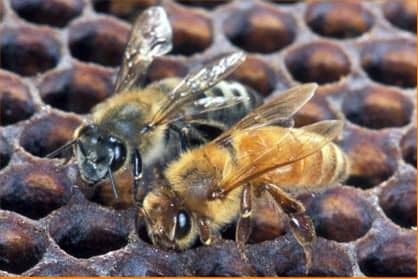
The leading principles of breeding are considered common for most plants and animals, but for many there is a specific tribal cause, due to the peculiarities of these objects, facilitating or hampering the work of the breeder.
The structure of the bee family can serve as an indicator of the higher stage attained in the evolution of the life of insects. The family of bees is an integral biological complex organ. Each member of the family (uterus, drone or bee) can not reproduce and exist independently.
The main difficulty in selecting bees is the enormous functional and morphological difference between the bee and the uterus. The queen bee is a real oviparous “apparatus”, which at a certain period is able to lay eggs up to 3000 eggs per day, which makes the number of family workers reach 80,000. The working individuals are functionally and morphologically adapted to collecting pollen, honey and many other works, and in hive, and outside it, they do not lay eggs.
The bee family includes 2 generations:
– The queen bee is the mother, the ancestor of the family, and the worker bees are her offspring.
– Drones of honey bees – males, come from eggs of the uterus. They are non-permanent residents of the bee family, their number is regulated by the working individuals of the family.
The social way of life of honey bees leads to the fact that through selection (natural and artificial) is not a single individual and not stasis (an individual in the family of insects that differs from others in the function and structure) family, and the whole family, which is the main The difference between bee breeding and other animals. But this provision does not answer the question of studying individual stasis of bees, because of which the main family selection (winter hardiness and productivity of honey of families, etc.) should be supplemented with an element of selection according to a certain characteristic of the stasis of the bee family. Selection and breeding of bees is complicated due to the fact that natural acts of mating the uterus with drone occur in the air, which greatly complicates the control of the mating of individuals.
It is also important to understand the phenomenon of honey bees, namely in the destruction by bees in their family of certain eggs laid by the uterus. The number of eggs destroyed is controlled by workers, depends on the amount of food that can feed the whole family.
Копчение фруктов. Советы для начинающего пчеловода.
Aft balance of the apiary